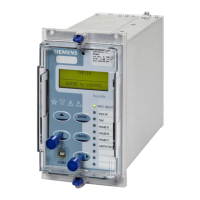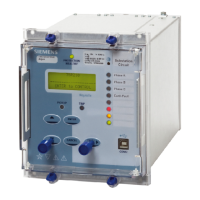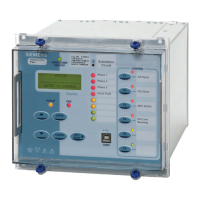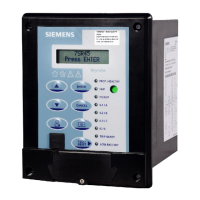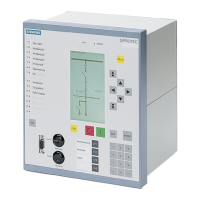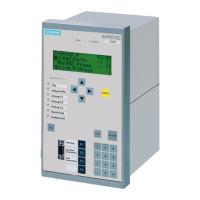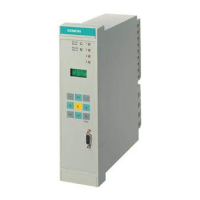7SR18 Applications Guide
Unrestricted Page 30 of 63 ©2018 Siemens Protection Devices Limited
Section 6: Relay Functions & Settings
6.1 Current Differential Protection
The current differential elements operate on a current magnitude comparator. This has four settings; Initial Setting
(I
S
), 1
st
Bias Slope (S
1
), 1
st
Bias Slope Limit (B
2
) and 2
nd
Bias Slope (S
2
). The relay operates by comparing the
magnitude of the local and remote relay currents. The characteristics and equations are shown in Figure 6.1-1.
The differential algorithm is phase segregated and will produce a trip for the operation of any of the three-phase
differential elements.
It is imperative that the relay differential settings and software revisions are identical for each pair of
relays protecting a feeder at all times. The Software Revision can be checked by pressing and holding the
fascia [TEST/RESET] and [CANCEL] pushbutton simultaneously, when the relay displaying its identifier at
the top of the menu structure. The Software Revision number installed is scrolled across the LCD.
Advice on setting the differential elements for various types of circuits and earthing methods are covered later.
But a summary of the technical aspects to consider is listed.
Initial Setting - this setting defines the minimum sensitivity of the internal fault that the protection can detect. This
setting also defines the bias current. The feeder charging current must be assessed when defining the lowest
setting that could be applied to a feeder. The accuracy and correct ratio of the CT’s is the main consideration
when setting this. This setting is default at 30%.
1
st
Bias Slope - this is used to allow the relay to detect lower level internal earth-faults. It will generally be
selected to 20% for resistance earthed power systems and 30% for solidly earthed power systems.
2
nd
Bias Slope – this setting is used to accommodate some saturation of the CT’s caused by through phase
faults on the feeder. This setting should always be selected to 150%.
1
st
Bias Slope Limit – this setting as a multiple of rated current, defines where Slope 1 ends and Slope 2 begins.
This setting is critical as it defines the CT formula to use and the ability of the relay to detect earth-faults on
resistance earthed networks. A lower setting makes the relay more stable for through-faults but may compromise
earth-fault detection. Non-effectively earthed power systems will tend to require a higher setting than solidly
earthed power systems, as some load will tend to continue to flow during the earthed. This will provide extra bias
to the relays and shift the fault point towards a more stable position.
The following page illustrates the relay differential characteristics and settings.
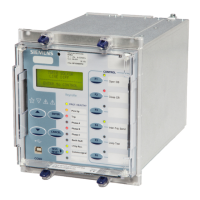
